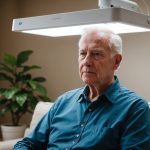Understanding Post-Operative Care in Knee Replacement
Navigating the post-operative care period following knee replacement surgery is crucial for effective recovery. This surgical procedure is often necessary for individuals suffering from severe joint damage due to conditions such as osteoarthritis, significantly affecting quality of life. Effective knee replacement recovery begins immediately after surgery and involves addressing various challenges that may arise.
One major obstacle in the post-operative care phase is managing pain, swelling, and regaining mobility. The presence of these challenges necessitates a comprehensive recovery plan tailored to each patient’s unique needs. Patients often require encouragement to adhere to rehabilitation programs, as neglecting these aspects can hinder progress and prolong recovery time.
In the same genre : Navigating Exotic Pet Health: Strategies for UK Veterinarians in Diagnosing and Treating Imported Animal Diseases
A key component of successful knee replacement recovery is the involvement of physiotherapists. Their role extends beyond basic physiotherapy exercises; it involves crafting a personalised approach to restore strength, flexibility, and endurance. Physiotherapists work closely with patients to set realistic recovery goals, monitor progress, and adjust techniques as necessary. This dynamic support not only enhances physical recovery but also boosts patients’ confidence and motivation.
Through guided sessions, physiotherapy is instrumental in optimising joint function, contributing significantly to the restoration of daily activities, and improving overall patient outcomes. The collaborative efforts of patients and physiotherapists are paramount in ensuring long-term success post-surgery.
Topic to read : Exploring Cutting-Edge Strategies by UK Allergists for Managing Adult-Onset Asthma
Evidence-Based Rehabilitation Techniques
In the realm of knee rehabilitation, evidence-based practice stands as a cornerstone, advocating for therapeutic techniques backed by scientific research. This ensures rehabilitation exercises are not only safe but also tailored to individual needs.
The significance of crafting individualized rehabilitation plans cannot be overstated. Each patient presents unique challenges and conditions; hence, their rehabilitation must reflect these intricacies. Personalised plans can significantly enhance recovery by addressing the specific capabilities and limitations of each individual.
Effective exercise regimens play a vital role in promoting early mobility. They often incorporate a blend of strength training, flexibility exercises, and balance work. These regimens aim not only to restore function but also to prevent future injury. The exercises should be adaptable, progressing as the patient’s mobility improves, ultimately leading to better outcomes.
Case studies have illustrated the success of such approaches. For instance, a regimen focusing on gradual load increases and consistent monitoring led to complete mobility recovery in just six months for an athlete post-surgery. This emphasizes the profound impact of evidence-based, personalised rehabilitation on recovery timelines and overall outcomes.
These principles guide rehabilitation professionals in providing the most effective care, enhancing both short-term mobility and long-term health.
Comprehensive Patient Assessment Strategies
In the realm of patient assessment, thorough and consistent strategies are crucial for effective rehabilitation outcomes.
Techniques for Initial Assessments
Initial assessments lay the groundwork for personalized treatment plans. Evaluation techniques such as thorough interviews and physical examinations are pivotal in understanding a patient’s baseline. Functional assessments, which evaluate a patient’s ability to perform everyday tasks, provide critical insights into their needs.
Monitoring Progress Throughout Rehabilitation
Monitoring progress is essential to ensure that rehabilitation is on track. This involves ongoing patient assessments that focus not only on physical improvements but also on any challenges the patient may encounter. Tailoring rehabilitation based on these assessments ensures that treatment remains appropriate and effective as the patient progresses.
Adapting Assessments for Special Populations
Certain patient demographics, such as those recovering from knee replacement surgery, require tailored assessment strategies. Key assessment tools for these patients might include range of motion evaluations and strength assessments. For special populations, typically involving older adults or those with pre-existing injuries, modifications in standard evaluation techniques are essential. These adaptations help account for varying abilities and ensure that all aspects of the patient’s condition are adequately addressed.
Pain Management Approaches
In post-operative pain management following knee replacement surgery, understanding the underlying pain mechanisms is vital. The surgical procedure can induce inflammation, heightened nerve sensitivity, and even emotional responses, which all contribute to discomfort. Recognising these can guide effective pain management in physiotherapy interventions.
A multi-modal approach often yields the best outcomes. This involves employing a variety of pain management strategies that might include medications, physical therapy, and cognitive techniques. For example, using both pharmaceuticals and physical interventions can address different aspects of pain, resulting in more comprehensive relief.
Physiotherapy plays a pivotal role in addressing post-operative pain. Techniques such as cold therapy, massage, and structured exercises help alleviate stiffness and improve mobility. Encouraging movement as soon as safely possible can minimise complications and speed up recovery.
Communication is also a cornerstone of successful pain management strategies. Clear dialogue with patients about their pain expectations and treatment goals can demystify the process and make individuals active participants in their recovery. This engagement often leads to improved compliance with prescribed physiotherapy interventions, ultimately enhancing the effectiveness of the overall pain management strategies.
Patient Education and Support Resources
Educating patients undergoing knee replacement is crucial for successful rehabilitation. Essential educational materials should include clear and concise guidelines on what to expect before, during, and after surgery. These materials can address common concerns and help patients mentally prepare for the process.
Physiotherapeutic education plays a vital role in this journey. By understanding the importance of prescribed exercises and techniques, patients can actively participate in their recovery. Strategies for effective communication of rehabilitation goals involve using simple language and relatable examples. Tailoring instructions to match the patient’s lifestyle and abilities can enhance comprehension and motivation.
Modern technology provides excellent support resources for patient education. Digital platforms and apps allow for progress tracking and provide reminders for medication and exercises, fostering adherence to recovery plans. Virtual physiotherapy sessions or instructional videos can supplement in-person consultations, ensuring patients remain engaged and informed.
Support resources should also extend beyond physical recovery, addressing emotional and psychological needs. Providing contact details for helplines and support groups can be immensely beneficial. Encouraging patients to reach out when feeling overwhelmed helps in maintaining a positive outlook, ultimately contributing to a successful rehabilitation journey.
Addressing Challenges within the UK Healthcare System
In the UK healthcare system, physiotherapists encounter specific challenges that can impact their practice. One primary issue is the increasing demand for physiotherapy services, especially in post-operative care. This surge is partly due to an ageing population and rising surgery rates, which often result in longer wait times for patients. Moreover, the legislative framework governing healthcare practices can add to these pressures, with stringent regulations and standards that practitioners must adhere to.
Physiotherapists must navigate this complex landscape by actively engaging with ongoing professional development to keep pace with the evolving demands and legislative updates. Additionally, they must remain informed about the healthcare standards that influence their work, such as the National Health Service (NHS) guidelines and the Care Quality Commission (CQC) standards.
To address these challenges, it is crucial to develop strategies that utilize available resources effectively. This might include embracing digital platforms for patient consultations, thereby reducing the burden of in-person visits and cutting down wait times. Collaborating with healthcare professionals across disciplines can also enhance the continuity and quality of post-operative care. By leveraging technology and fostering interdisciplinary cooperation, physiotherapists can better meet patient needs within the current healthcare framework.
Case Studies and Examples
Exploring case studies offers deep insights into successful rehabilitation. Examining notable instances allows for understanding effective strategies in physiotherapy. Real-world applications provide valuable insights beyond theoretical knowledge, showcasing potential pathways for recovery.
A remarkable rehabilitation success story is that of a 65-year-old patient who underwent knee replacement. The recovery plan included a mix of tailored exercises and aquatic therapy. Within weeks, significant improvements were observed. This case highlights the benefits of customising plans to individual needs, enhancing outcomes beyond standard protocols.
Another practical example involves a young athlete who recovered mobility after an ACL injury. The integration of virtual reality exercises into physical therapy sessions expedited recovery. This approach not only engaged the patient but also optimised movement retraining, illustrating the power of innovative technologies in healing processes.
Lessons learned from these scenarios underline the importance of patient-centric care. Factors like motivation, personalized care plans, and adaptive exercises are crucial. They inform the development of future strategies, ensuring each patient’s unique requirements are met.
By reflecting on these case studies, practitioners can implement new methods, grounded in proven successes, ultimately transforming outcomes and patient satisfaction in physiotherapy.











